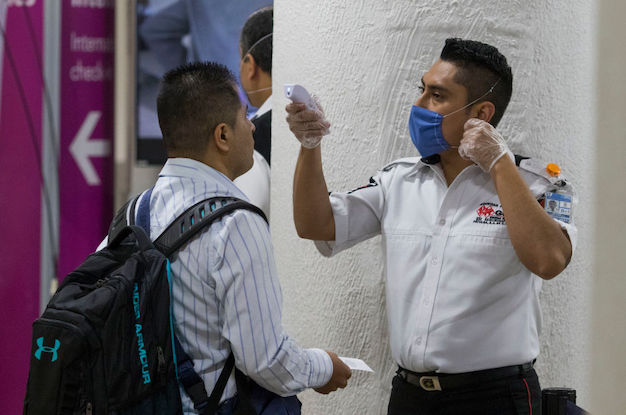El Salvador is facing one of its most challenging constitutional crises since the end of the civil war. The institutional conflict began on June 5, 2012, when the Constitutional Chamber (Sala de lo Constitucional) of the Supreme Court declared the 2006 and 2012 appointments of Supreme Court judges and their alternates to be unconstitutional. Arguing that the principle of democratic legitimacy dictates that appointments can only be made once in a legislative term (and not twice, as happened in 2006 and 2012), the Chamber ordered the legislature to redo the appointment processes. The ruling also established that—since judges are irremovable—the Assembly could not transfer Constitutional Chamber Judge Belarmino Jaime to another chamber of the Supreme Court.
These rulings sparked an outcry among various elements of the Salvadoran political establishment. The National Assembly cried foul and decided to present a case against the Constitutional Chamber before the Central American Court of Justice (CACJ), the judicial organ of the Central American Integration System (SICA) that is based in Managua, Nicaragua. The CACJ admitted the demand the next day and ordered an injunction that suspended the Chamber’s rulings.
But this decision has plunged El Salvador into a judicial crisis while weakening the many strides made to promote the rule of law and governance.1
Further contextualization of these events is important to understand the chain of events. The Constitutional Chamber has played a prominent role in El Salvador in recent years. In 2009, five new judges were appointed to the Supreme Court (as is done every three years), of whom four were appointed to the Constitutional Chamber. These judges have stood out for their independence and their refusal to succumb to pressures from the country’s political and economic establishment. This has meant a great leap forward for El Salvador in its consolidation of the rule of law and of democratic institutions, and is an important example of judicial progress for judges and courts across the region.
However, the political establishment has not been pleased. When members of the National Assembly (who in 2009 lauded the high quality and independence of the appointed judges) realized that judicial independence affected their ability to have influence, the Assembly approved a decree (Decree 743 of June 2, 2011) aimed at obstructing the Constitutional Chamber by requiring that all decisions on constitutionality be taken unanimously. Only after two months of persistent national and international protests, this decree was revoked. But recent developments demonstrate that the clash between state powers is unlikely to subside anytime soon.
For one, the National Assembly should have not presented the case to the CACJ. The Supreme Court of Justice is El Salvador’s highest legal authority, and its decisions are binding. There is no higher authority than the Constitutional Chamber for the interpretation of the Constitution. International courts like the CACJ only have jurisdiction over the treaty that they were created to protect; for CACJ, these are the treaties and protocols approved by SICA member states.
This means that the CACJ should not have admitted the case. Article 22 subsection F of its statute states that the CACJ can “examine and rule, at the request of the affected party, on conflicts that may arise between the fundamental organs or powers of the State, as well as when judicial rulings are not respected in fact.” While this leaves the door open for CACJ to intervene in state affairs, it seems evident that this article should be interpreted within the spirit of the purpose for which the CACJ and SICA were created: to promote Central American integration. Moreover, the Protocol of Tegucigalpa (by which SICA was created) and the rest of the CACJ statute strongly suggest that the rationale of this article is to protect the rule of law in member states. However, instead of promoting the rule of law, a SICA body is now actively damaging it.
The chaos is complete: the Constitutional Chamber issued resolutions calling any decision of the CACJ on this matter unconstitutional and inapplicable. On Sunday, July 1, the “new” members of the Supreme Court took office. They were able to do this due to a legislative decree that authorizes any member of the Supreme Court to convoke a session of the Plenary of the Court without the president having to be present.
The result is that El Salvador now has two Supreme Courts and (since July 16) two Supreme Court presidents. The issue is becoming increasingly more politicized, and the National Assembly has created a commission to investigate the legality of the appointment of two judges of the Constitutional Chamber, opening the possibility to start impeachment processes.
What should be done now? As with any ruling of a Supreme Court, the affected parties should comply with the judgments. Although there certainly is room to criticize the Constitutional Chamber’s rulings—as voiced by institutions such as Salvadoran human rights organization FESPAD—Supreme Court judgments are not optional; they are binding.2 The National Assembly should redo the appointment processes of 2006 and 2012, complying with the guidance provided by the Chamber to provide full transparency about the process.
This crisis demonstrates that the Legislature must establish a more rigorous, transparent and merit-based selection process for Supreme Court judges.3 Only through such a process can the judiciary and the rule of law in El Salvador be strengthened.
*Homepage Photo: Courtesy of Presidencia de la República del Ecuador.
Endnotes
1 A short, schematic overview of these events can be found at: www.dplf.org/uploads/1342561906.pdf.
2 See: fespad.org.sv/documentos/actualidad-resoluciones-csj.pdf.
3 The guidelines established by DPLF provide some suggestions. See: www.dplf.org/uploads/1331050521.pdf.






